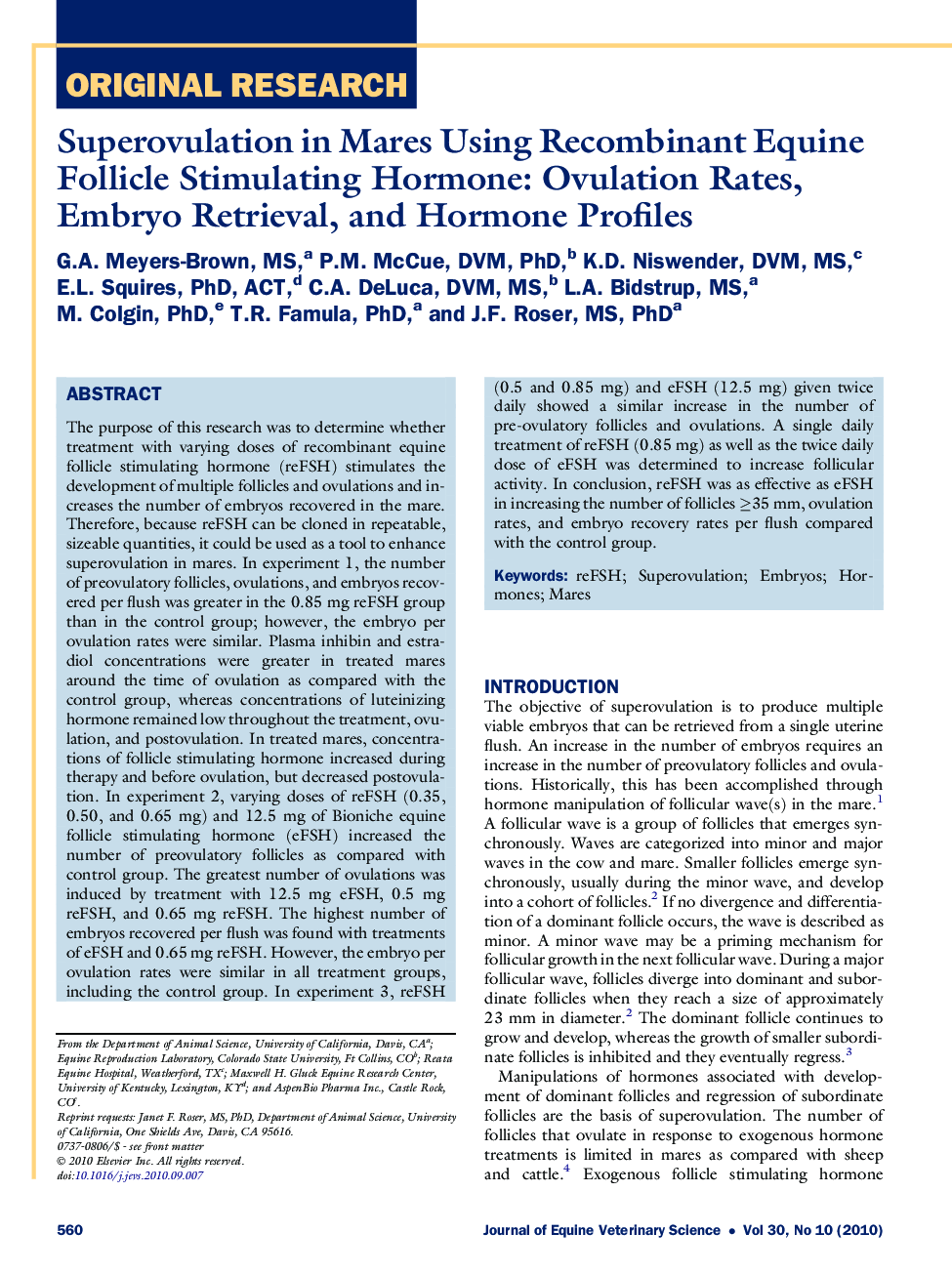| Article ID | Journal | Published Year | Pages | File Type |
|---|---|---|---|---|
| 2395863 | Journal of Equine Veterinary Science | 2010 | 9 Pages |
The purpose of this research was to determine whether treatment with varying doses of recombinant equine follicle stimulating hormone (reFSH) stimulates the development of multiple follicles and ovulations and increases the number of embryos recovered in the mare. Therefore, because reFSH can be cloned in repeatable, sizeable quantities, it could be used as a tool to enhance superovulation in mares. In experiment 1, the number of preovulatory follicles, ovulations, and embryos recovered per flush was greater in the 0.85 mg reFSH group than in the control group; however, the embryo per ovulation rates were similar. Plasma inhibin and estradiol concentrations were greater in treated mares around the time of ovulation as compared with the control group, whereas concentrations of luteinizing hormone remained low throughout the treatment, ovulation, and postovulation. In treated mares, concentrations of follicle stimulating hormone increased during therapy and before ovulation, but decreased postovulation. In experiment 2, varying doses of reFSH (0.35, 0.50, and 0.65 mg) and 12.5 mg of Bioniche equine follicle stimulating hormone (eFSH) increased the number of preovulatory follicles as compared with control group. The greatest number of ovulations was induced by treatment with 12.5 mg eFSH, 0.5 mg reFSH, and 0.65 mg reFSH. The highest number of embryos recovered per flush was found with treatments of eFSH and 0.65 mg reFSH. However, the embryo per ovulation rates were similar in all treatment groups, including the control group. In experiment 3, reFSH (0.5 and 0.85 mg) and eFSH (12.5 mg) given twice daily showed a similar increase in the number of pre-ovulatory follicles and ovulations. A single daily treatment of reFSH (0.85 mg) as well as the twice daily dose of eFSH was determined to increase follicular activity. In conclusion, reFSH was as effective as eFSH in increasing the number of follicles ≥35 mm, ovulation rates, and embryo recovery rates per flush compared with the control group.
